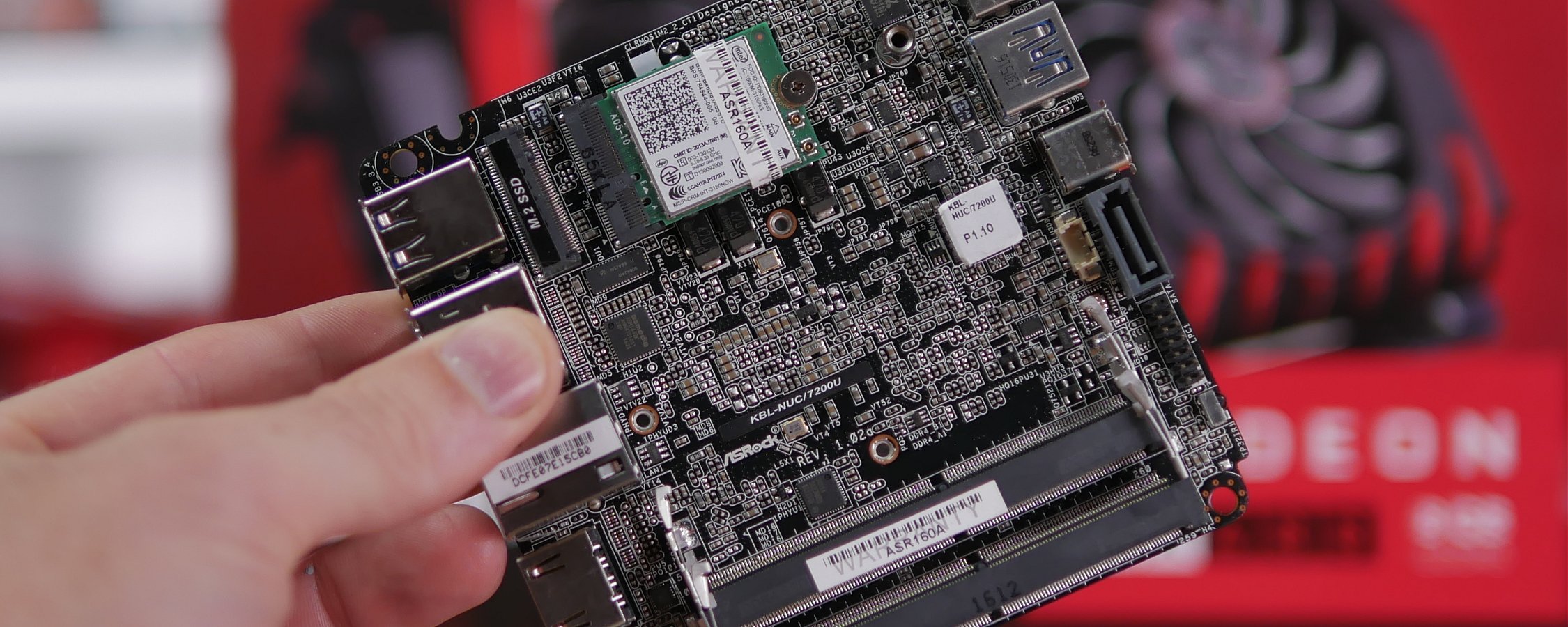Reviewed just four months ago, Asrock's compact yet capable Beebox-S is one of our favorite mini PCs given its price, features, build quality, and dual-core 14nm Skylake-U processor. Although the Core i5-6200U SoC is over a year old, the system is efficient and surprisingly affordable at $165 for the 6100U and $320 for the 6200U.
I've been using the latter as my day to day HTPC since August and it's been doing a fantastic job, so I didn't expect it to be replaced a few months later. Nonetheless, Asrock has sent an updated Beebox-S model sporting Intel's new 7th-generation processor based on the Kaby Lake-U architecture.
Rather than look at the Beebox-S 7200U in detail, we're going to focus on the upgrade to Kaby Lake as this is the only notable change.
Which one's which?

While our official Intel Kaby Lake desktop coverage can't be published until early next month, the mobile and low-power processors have been out in the wild for a few months now. With the arrival of this new Beebox-S, we thought it would be interesting to run benchmarks against the previous model. Both use low powered 15-watt U-series parts and with the Core i5-7200U effectively replacing the i5-6200U, it makes for an ideal comparison.
Before we jump to the benchmarks, let's touch on the improvements you can expect from the new 7th-gen Core chip. Intel has made some tweaks to its 14nm process for additional performance, including an improved fin profile and transistor channel strain. These claim to deliver a ~12% processing performance improvement, which should make Kaby Lake more efficient when combined with architectural gains.
Back in August, Intel's press material suggested that Kaby Lake would bring around 25% better performance per watt than Skylake. Intel also reported double-digit gains when comparing the new Core i7-7500U to the Core i7-6500U: 12% better "productivity" and 19% better web performance. That said, at the time we noted that a good portion of these gains could be attributed to Kaby Lake's higher clock speeds rather than pure IPC improvements.
One of the major upgrades in Kaby Lake is an improved media engine built upon the company's Gen9 graphics architecture. The Multi-Format Codec (MFX) has been upgraded to support the latest media standards, including 4K 10-bit HEVC decode/encode, 10-bit VP9 decode, and 8-bit VP9 encode. The Video Quality Engine (VQE) also sees improvements, bringing HDR tone mapping and Wide Color Gamut (Rec.2020) support.
Thus on paper the biggest difference between 7200U and 6200U is clock speed. The Core i5-7200U runs at a 9% higher base clock frequency (12% higher for boost frequencies). The integrated GPU has also been upgraded to HD Graphics 620. Other than that you get the same two physical cores with Hyper-Threading support for four threads, a 3MB L3 cache and the same 15-watt TDP.
The processor's MSRP remains $218, although for the time being there's a $30 premium for the new Beebox-S models. Let's get to the results to see just how much faster Kaby Lake really is, we are comparing against several different systems for better context as follows...
Test System Specs
|
AMD APU System Specs
|
AMD AM1 System Specs
|
|
Intel Haswell System Specs
|
Asrock Beebox System Specs
|
|
Intel Braswell System Specs
|
ECS Liva X System Specs
|
|
MSI Cubi 2 Plus System Specs
|
Asrock DeskMini System Specs
|
|
Asrock Beebox-S 6200U
|
Asrock Beebox-S 7200U
|
|
Intel NUC6i7KYK System Specs
|
|
Memory & Synthetic Benchmarks
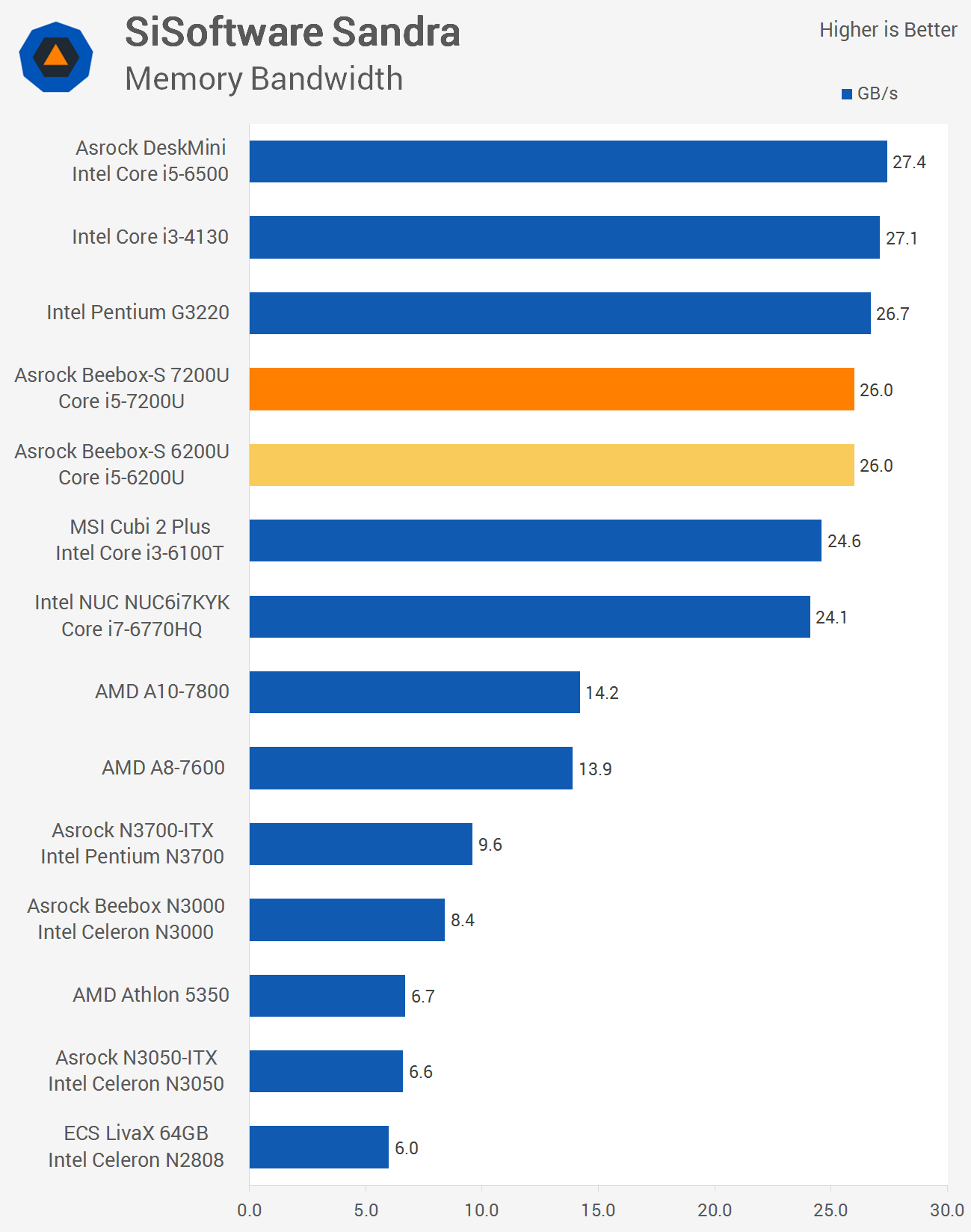
Both versions of the Beebox-S are running DDR4-2133 memory and as you can see, the Core i5-7200U provided the same 26GB/s memory bandwidth as the previous generation 6200U processor.

The 7200U might be clocked up to 11% faster but here we see a rather large 21% jump in performance for the L1 cache bandwidth which now exceeds that of the Core i3-6100T processor. The improvement for the L3 cache bandwidth wasn't quite as impressive, jumping up by 17%. That's still noteworthy all the same and it'll be interesting to see how these gains translate in real world applications.
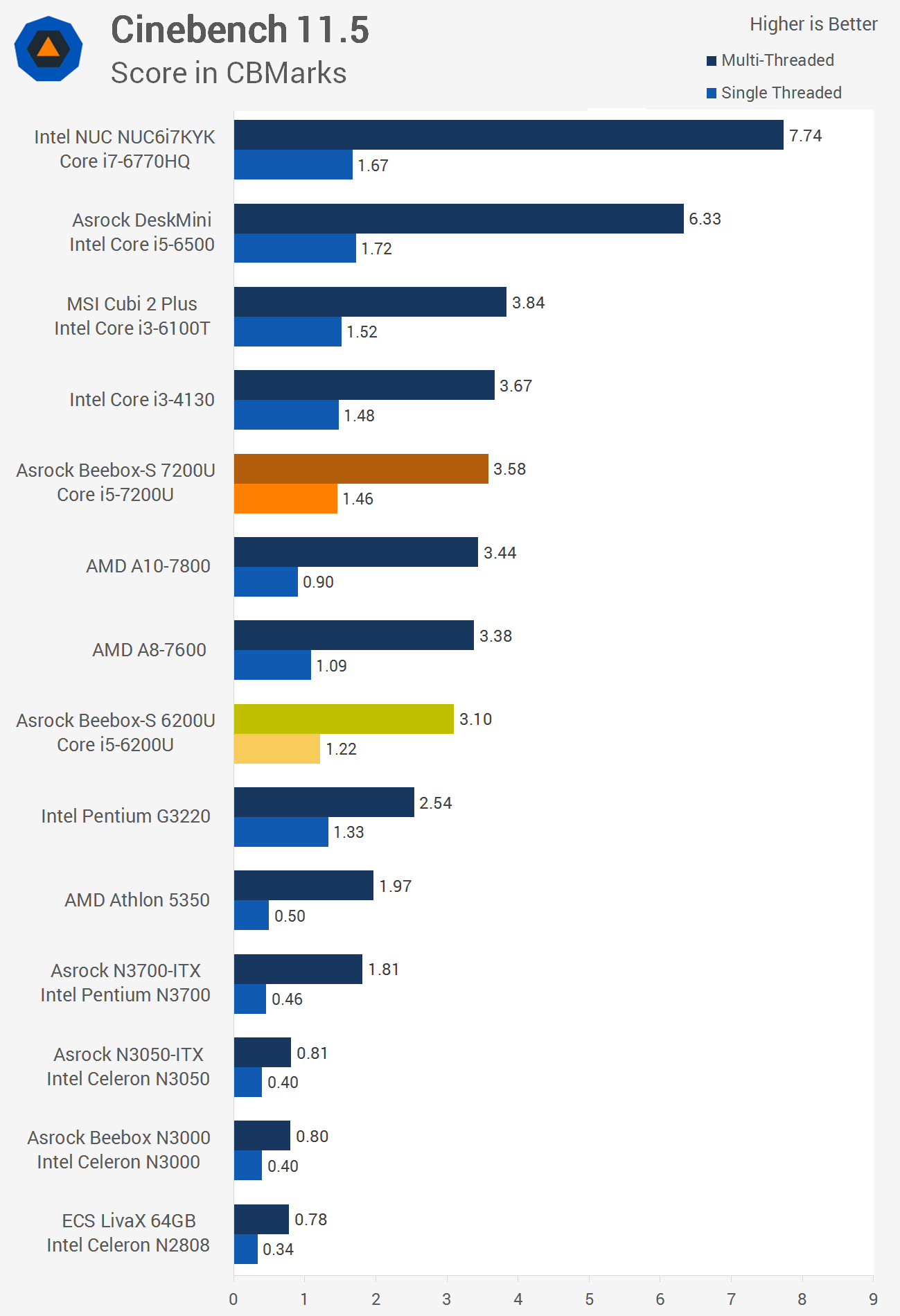
The Cinebench R11.5 benchmark only shows a 15% improvement for the multi-threading score which if you take that 11% clock speed advantage into account really doesn't mean much. That said, we did see a 20% improvement for the single thread test which is interesting and this jump placed the 7200U on par with the Core i3-4130 and 6100T processors.
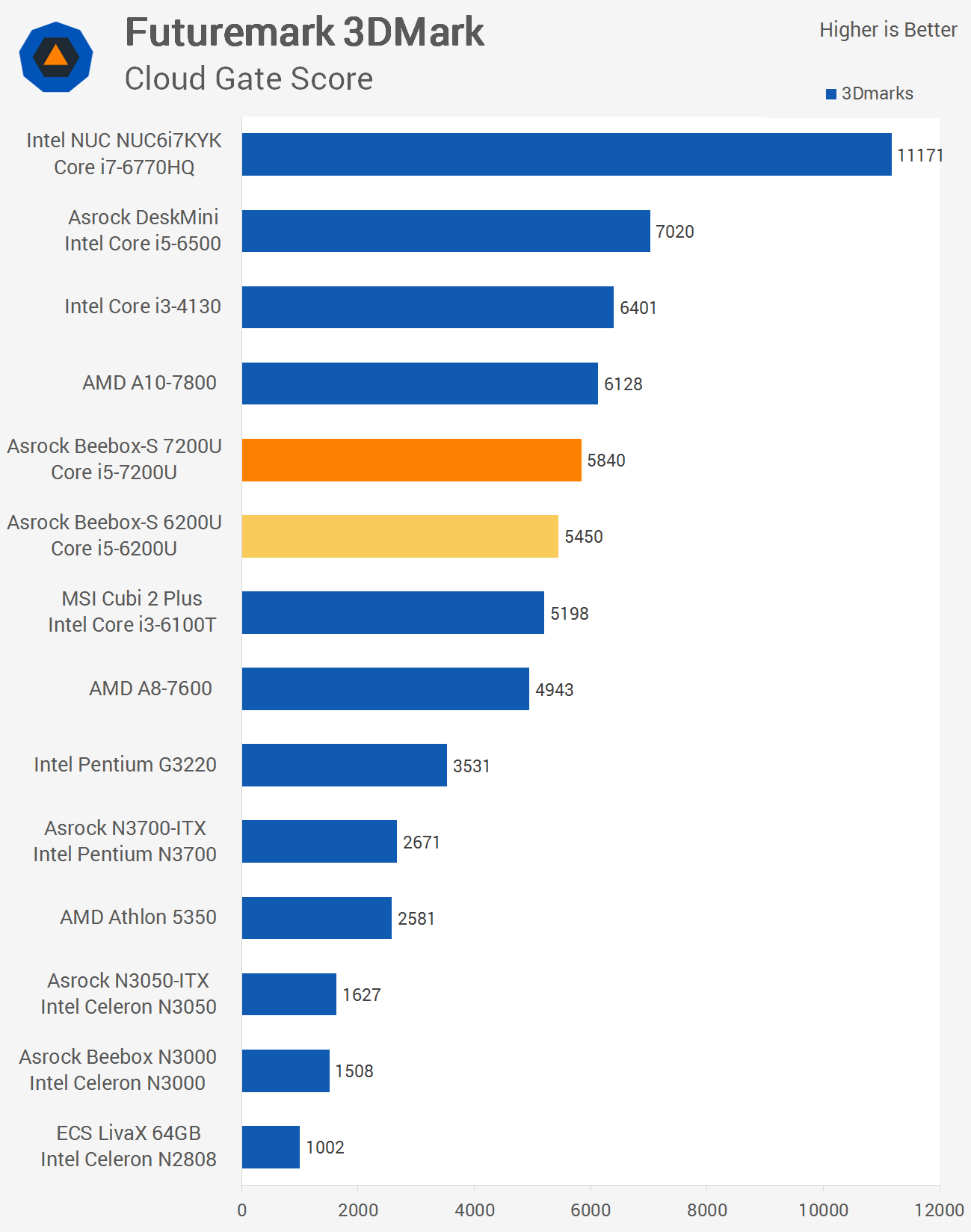
The 3DMark cloud gate score increased by 7% with the 7200U which I have to say seems to be entirely down to the fact that this new model runs at higher clock speeds and nothing else.

Going back to 3DMark 06 we find the Beebox-S 7200U is 16% faster than the older 6200U model. That's a decent boost and it placed the 7200U ahead of the AMD APU powered systems as well as the Core i3-4130.
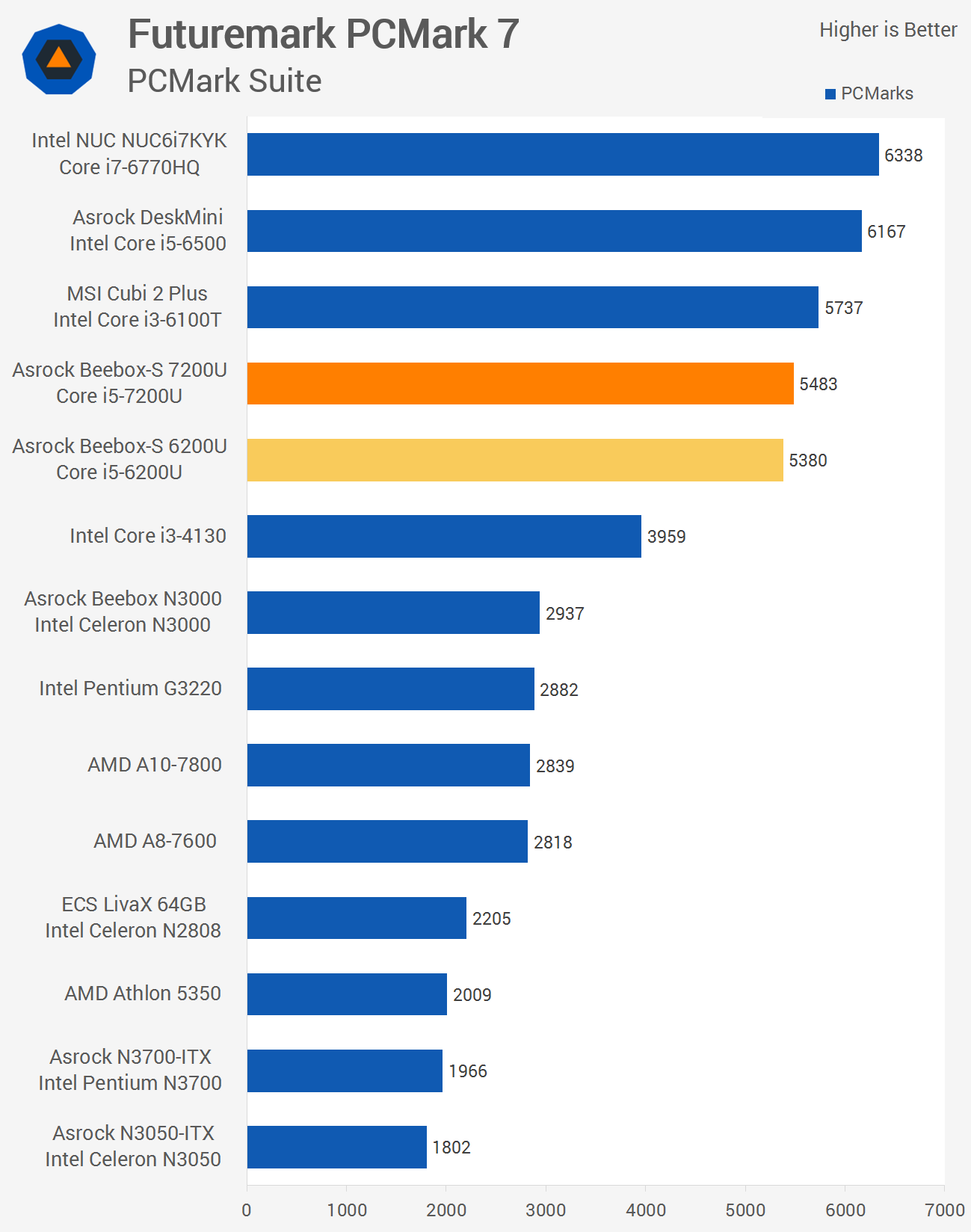
This PCMark 7 result could be very telling and a strong indication of how the real-world application testing is going to go. The 7200U powered Beebox-S was just 2% faster despite that clock speed advantage, so this is a disappointing result.
